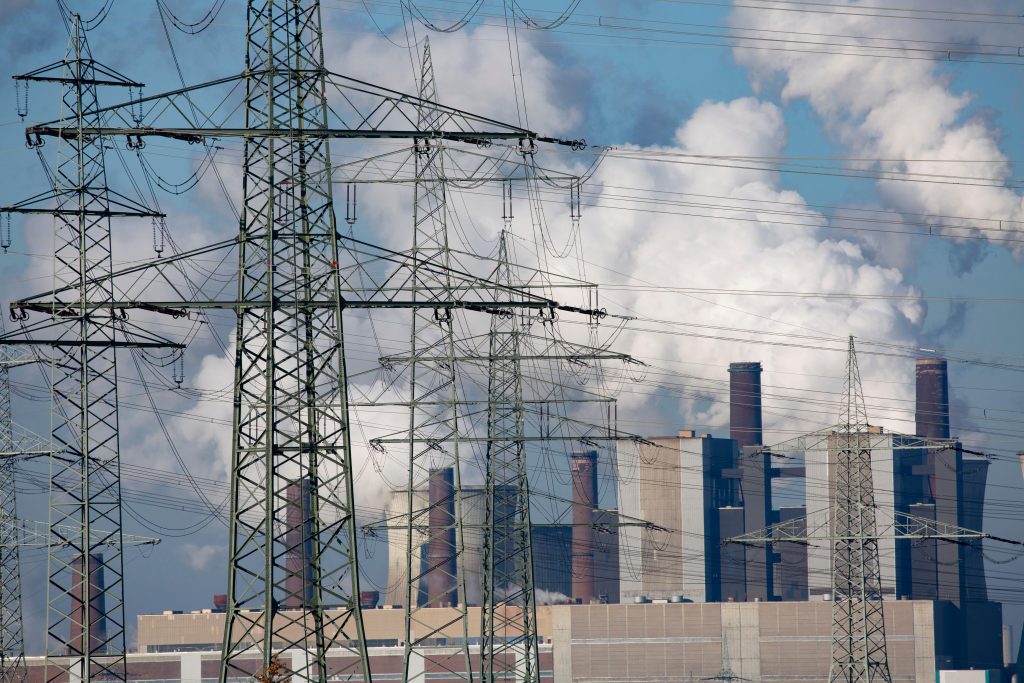Banks in temporary troubles as clearers of energy firms

With skyrocketing energy prices on 26 August 2022, energy firms came in troubles and their banks faced a critical moment. The sharp price increases of future contracts on gas and power triggered huge variation margin payments on that day. A few energy firms could only meet their margin calls with difficulties and applied for state-aid in the following days, e.g., Fortum, Axpo Holding AG or Wien Energie. All three firms hedged their future power production by short positions in exchange traded power derivatives and needed additional liquidity for possible future margin calls. The liquidity assistance from the governments relieved the banks from their liabilities as clearers of the struggling energy firms.
In this article, we shed some light on the complex margining and clearing mechanism on energy exchanges and how abrupt price jumps can create a systemic risk for banks. Our analysis concentrates on the European Energy Exchange (EEX), the main trading venue for European power derivatives. Fortum, Axpo and Wien Energie are trading participants of EEX, but rely for the settlement of their trades on a bank which is a registered Clearing Member. In this function, the bank is guarantor and payment agent for the trades conducted by the trading participant. This means that if an energy firm cannot meet a margin call, its bank has to step in.
The most frequently traded power contracts are the EEX German Baseload Power Futures.1 Available maturities cover day, week, weekend, month, quarter and year.1 Since the energy firms hedged their production over several years, our analysis focuses on the year contracts 2023, 2024 and 2025.
Orbit36 estimates based on the open interest that the price changes on 26 August 2022 required at the day-end an aggregate variation margin payment of up to EUR 200bn.2 With this amount, the owners of the short positions (sellers) had to compensate the owners of the long positions (buyers) for the daily mark-to-market gain of the futures contracts in cash, measured as the difference of the settlement price on 26 August 2022 versus the settlement price on 25 August 2022. The large variation margin payment significantly exceeded the initial margin of EUR 60bn, which both the buyers and the sellers had to deposit with the exchange as collateral for the above-mentioned contracts.3 This means there was a gap up to a total of EUR 140bn which was temporarily not covered by collateral.
The large temporary margin shortfall indicates that a few Clearing Members must have had temporary uncovered settlement balances in the magnitude of EUR 5bn or more with their energy trading clients, unless they would have demanded from their clients significantly higher initial margin amounts than required by the exchange. Or put differently, some banks had suddenly several billions at risk.
When the power prices dropped back on the next trading day, the situation relaxed. At the day-end, there was an aggregate variation payment of up to EUR 195 into the opposite direction, i.e., from buyers to sellers. Yet, it remains unclear to what extent the banks had to count on the liquidity assistance provided by the states for the trapped energy firms in order to avoid material own losses.
1) Prices are quoted in EUR/MWh and refer to a power volume of 1 MWh delivered on each day of the delivery period over 24 hours (e.g. for a year future 365*24=8760 MWh). The settlement occurs in cash.
2) Related to EEX German Baseload Power Futures year contracts Cal-23, Cal-24 and Cal-25. The estimated variation margin amount may include some double counts from combination trades, e.g. spread trades between different maturities or hedges with correlated underlyings like gas.
3) Initial margin amounts for EEX German Baseload Power Futures year contracts Cal-23, Cal-24 and Cal-25 as published by EEX as of 25 August 2022
Our conclusions from the temporary margin shortfalls on 26 August 2022 are as follows:
- Counterparty credit risks related to activities in derivatives remain a pressure point. As already shown by ‘Archegos’, models tend to underestimate the amount of collateral needed in a critical situation and are not always able to correctly predict the expected exposure at default. In case of unexpectedly large moves in the underlying price, counterparty exposures can turn out to be a multiple of what is expected based on model forecasts. If this comes together with a critical financial situation of the counterparty, the loss potential can be huge. Stress testing can help to identify such vulnerabilities.
- The risk mitigation through a central clearing counterparty protects the trading counterparties as desired, but creates a systemic risk for the banks acting as clearers of the energy firms. We believe that the banks mispriced the liquidity risk of their clearing businesses, which allowed the energy firms to build up enormous positions and leave the tail risk associated with it with the banks.
- The magnitude of the daily margin payments shows that energy firms with large short positions in exchange traded futures contracts continue to remain vulnerable with respect to margin calls due to raising energy prices, albeit their positions are non-speculative and motivated by reasonable hedging strategies. The credit lines provide by the governments might turn out to be insufficient. In our view, central banks should establish similar Emergency Liquidity Assistance (ELA) facilities for large energy firms as they already provide for banks.
- Better regulation is necessary for energy trading firms, in particular related to liquidity and collateral requirements. Minimum capital requirements would not have helped in the particular case.
- Demands from politicians to separate the energy firms’ production and trading activities are an inadequate solution for the problem, as they would disconnect the base transaction and the hedges.
Orbit36 can help banks, energy firms and governments to assess the risks of the current turmoil in energy markets.

Keep up the good work.